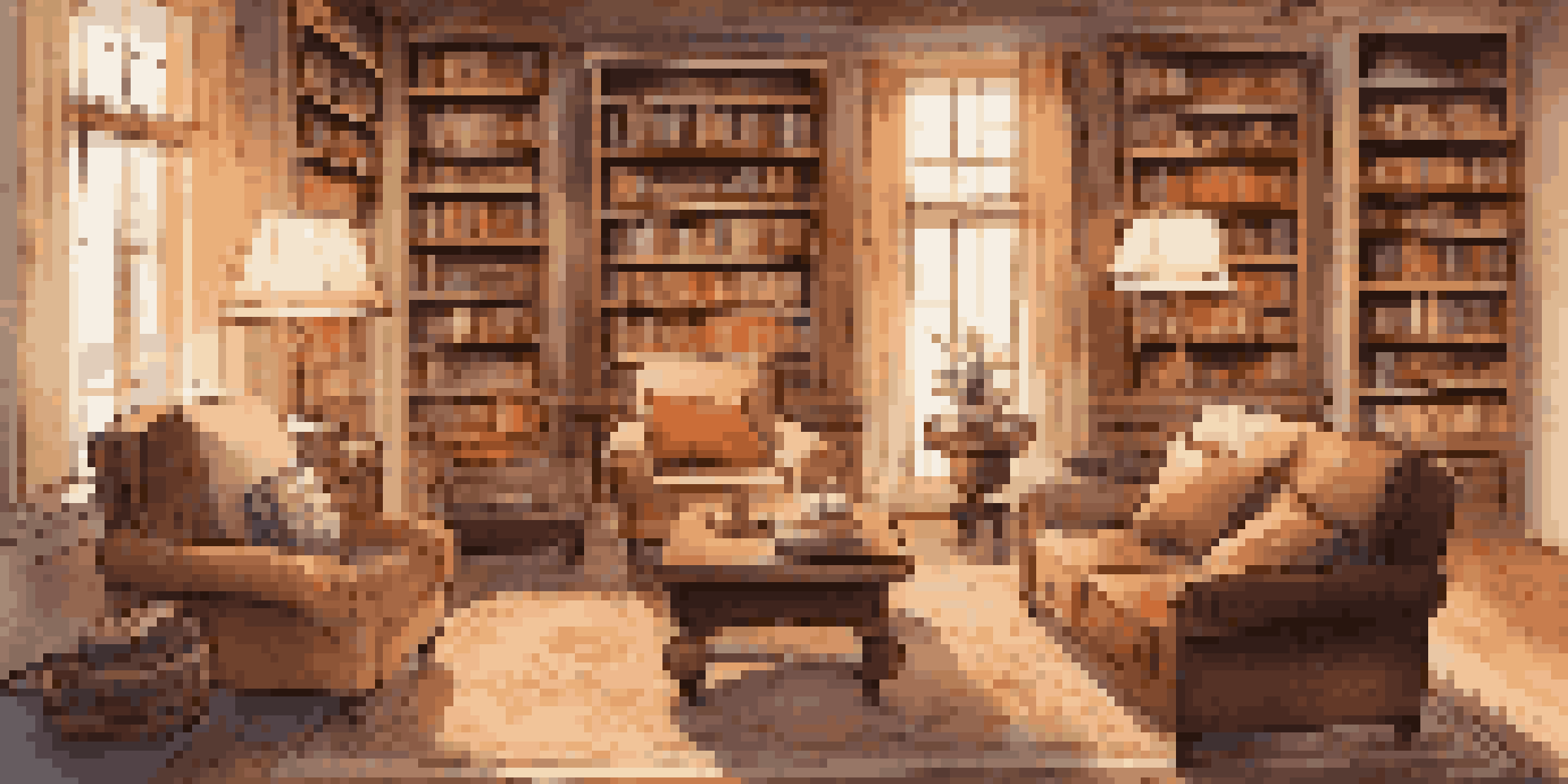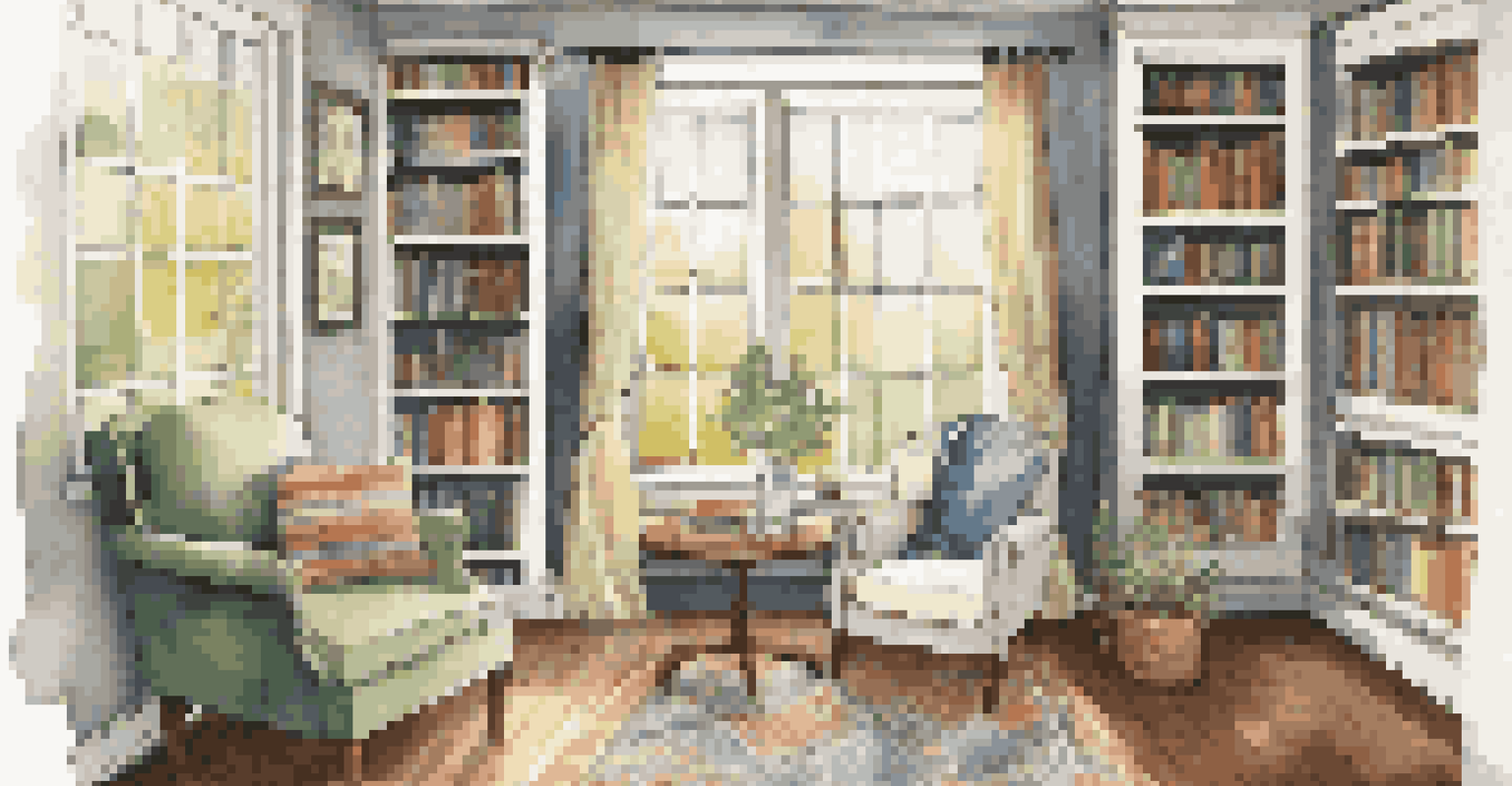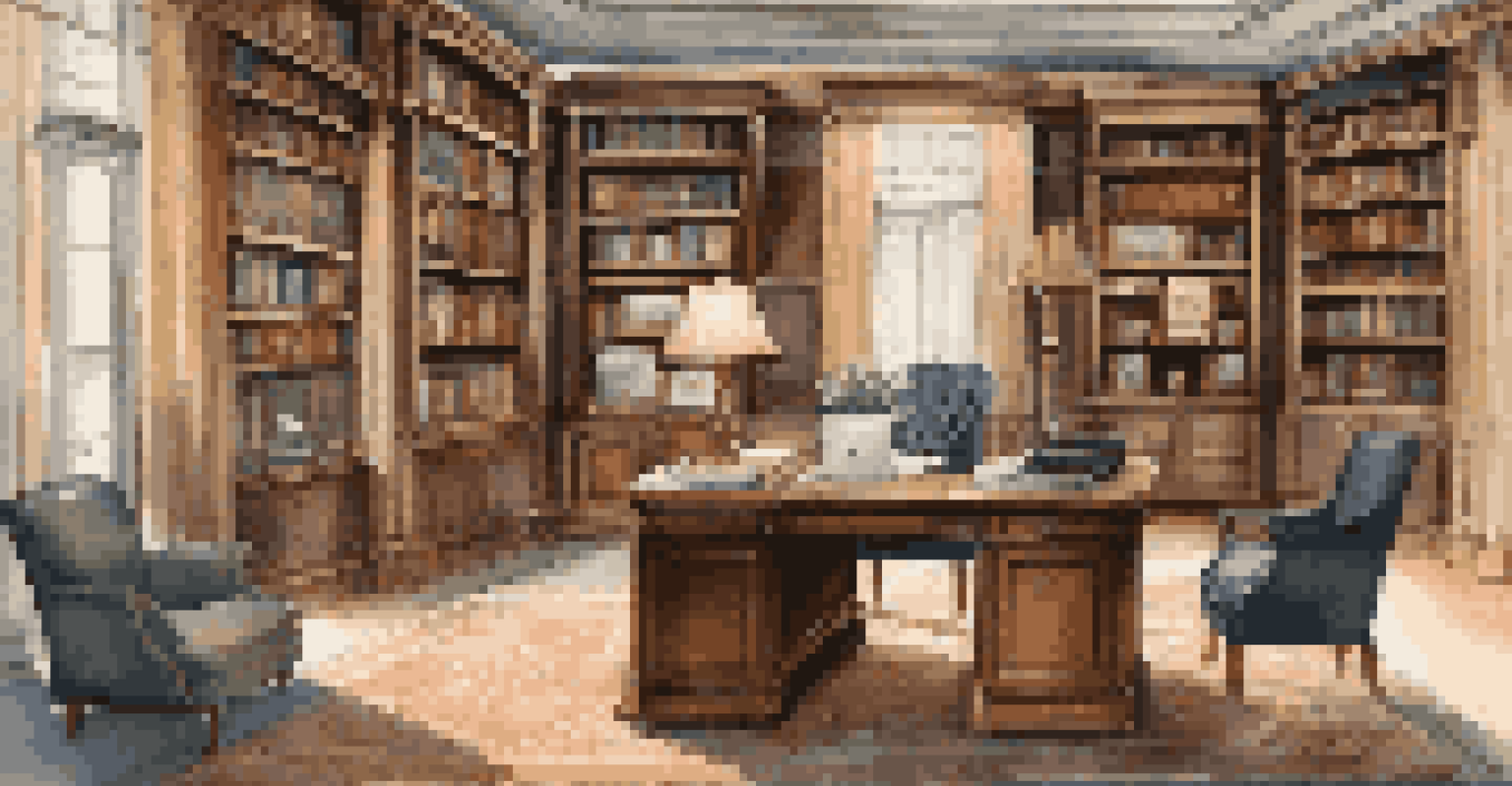Creating a Family History Library: Tips for Luxury Spaces

Designing a Luxurious Space for Family History
Creating a family history library is about more than just books; it’s a space that reflects your family’s story. Think of it as a sanctuary where you can explore your heritage while enjoying elegant surroundings. Combining comfort with sophistication will help you create an inviting atmosphere that encourages exploration and reflection.
The more you know of your history, the more liberated you are.
Consider the aesthetics of the room, including color schemes and furniture choices. Rich woods, plush seating, and neutral tones can evoke a sense of warmth and richness. Adding personal touches, like family photos or heirlooms, can enhance the space and make it feel uniquely yours.
Don’t forget about the lighting! A well-lit space can make all the difference in creating an inviting reading environment. Layered lighting, with a mix of ambient, task, and accent lights, can highlight important areas and create a cozy atmosphere for your family history exploration.
Selecting the Right Furniture for Comfort and Style
When it comes to furniture, prioritize comfort and style to create a library that you and your family will love. A cozy armchair or a plush sofa can encourage long reading sessions, while elegant bookshelves can display your family's history in an attractive way. Think about multifunctional pieces that can adapt to your needs over time.

A large coffee table can serve as a gathering point for family discussions or research sessions. Choosing a table with storage options can also help keep the space organized, allowing you to easily access materials. Remember, the goal is to create a functional yet luxurious environment that invites everyone to explore.
Design a Reflective Family Space
Creating a family history library blends comfort and aesthetics to reflect your family's unique story.
Don't shy away from unique pieces that can serve as conversation starters. An antique desk or a modern reading nook can add character to your library, making it a space that reflects your family’s personality. Mix and match styles to create a harmonious balance that feels both personal and sophisticated.
Incorporating Technology for Modern Research
In today’s digital age, technology can greatly enhance your family history research. Integrating a computer or tablet into your library can help you access online databases and digital archives with ease. Consider a stylish desk or a discreet charging station that keeps technology seamlessly incorporated into your design.
History is not a burden on the memory but an illumination of the soul.
You might also think about digital frames that can display rotating family photos or historical documents. This way, you can showcase your family’s legacy while keeping the space dynamic and engaging. Incorporating technology doesn’t mean sacrificing style; choose sleek devices that complement your library’s aesthetics.
Additionally, consider investing in research software that can help you organize your findings. A digital platform can simplify your genealogical research and make it easier to collaborate with family members. By merging technology with traditional research methods, you can create a comprehensive family history library.
Creating a Cozy Reading Nook
A reading nook can be the heart of your family history library, providing a comfortable spot for reflection and discovery. Design a cozy area with a soft armchair, a warm throw blanket, and a small side table for your favorite beverages. This intimate space can become a personal escape for family members to delve into their roots.
Position your reading nook near a window to take advantage of natural light during the day. A view of your garden or backyard can provide additional inspiration and serenity while you explore your family’s past. Adding a small bookshelf nearby can keep your most cherished volumes within arm’s reach.
Incorporate Technology Wisely
Integrating modern technology enhances research capabilities while maintaining the library's elegant design.
Don’t forget to personalize this nook! Include family heirlooms or artifacts that spark memories and stories. By creating a space that feels personal and welcoming, you’ll encourage family members to spend time there, fostering a deeper connection to their history.
Choosing the Right Books and Resources
Selecting the right books and resources is crucial for creating a well-rounded family history library. Start with books that cover genealogy basics, historical contexts, and family storytelling techniques. These will provide a strong foundation for your research and inspire family members to delve deeper into their roots.
Consider including resources specific to your family’s heritage or region. Local histories, cultural studies, and genealogy guides can offer valuable insights into your family's background. Additionally, family memoirs or biographies can serve as both inspiration and a reference point for your own family narratives.
Don’t forget about digital resources! Online databases, genealogy websites, and e-books can complement your physical collection. By curating a mix of traditional and modern resources, you can create a comprehensive library that caters to diverse family interests and research styles.
Incorporating Family Artifacts and Memorabilia
Family artifacts and memorabilia can bring a unique charm to your family history library, transforming it into a living museum of your heritage. Incorporate items like heirlooms, vintage photographs, and keepsakes that tell your family's story. Displaying these artifacts can spark conversations and intrigue among family members.
Consider using display cases or shadow boxes to showcase fragile items while keeping them protected. You can also create a dedicated wall for family photos or a timeline that highlights significant events in your family’s history. This visual storytelling can help younger generations connect with their roots.
Establish a Research Routine
Regular family gatherings for research and storytelling foster community and deepen connections to your heritage.
Involving family members in selecting and showcasing these artifacts can foster a sense of shared ownership and pride. Encourage each person to contribute their own memories and items, making the library a collaborative effort that honors your family’s legacy.
Establishing a Family History Research Routine
Creating a family history library is just the beginning; establishing a research routine is essential for ongoing exploration. Set aside regular times for family members to gather and share findings, stories, and experiences. This can help maintain engagement and foster a sense of community around your shared history.
Consider organizing themed research days, such as a focus on a specific ancestor or family branch. This can make the research process more structured and rewarding. Additionally, creating a family history journal can help document discoveries and reflections for future generations.

Encourage collaboration by inviting family members to bring their own research materials or findings. This can create opportunities for discussion and deeper understanding of your family's history. By making family history research a regular activity, you’ll ensure that your library remains a vibrant hub of discovery.